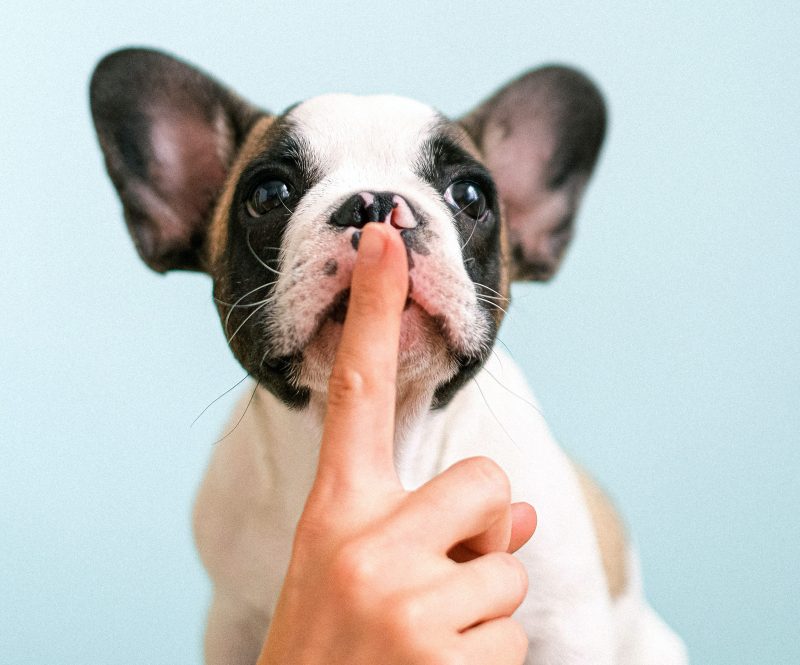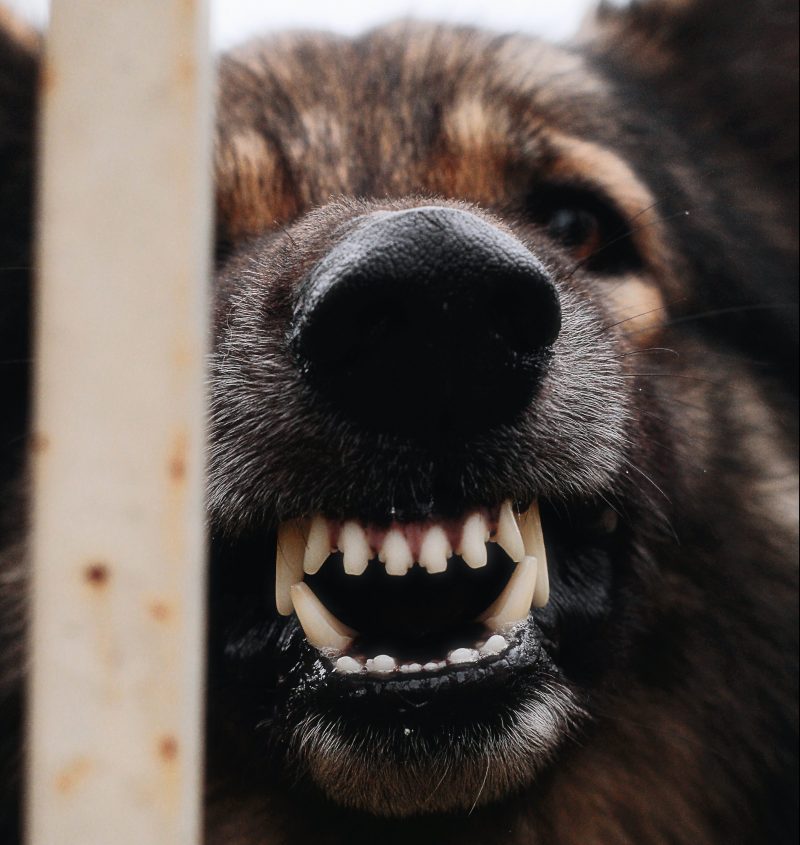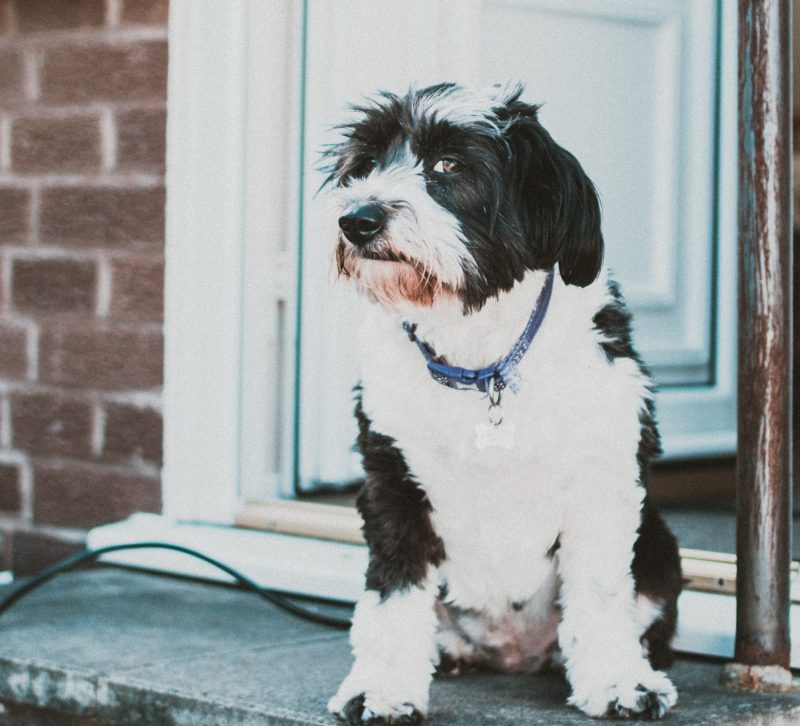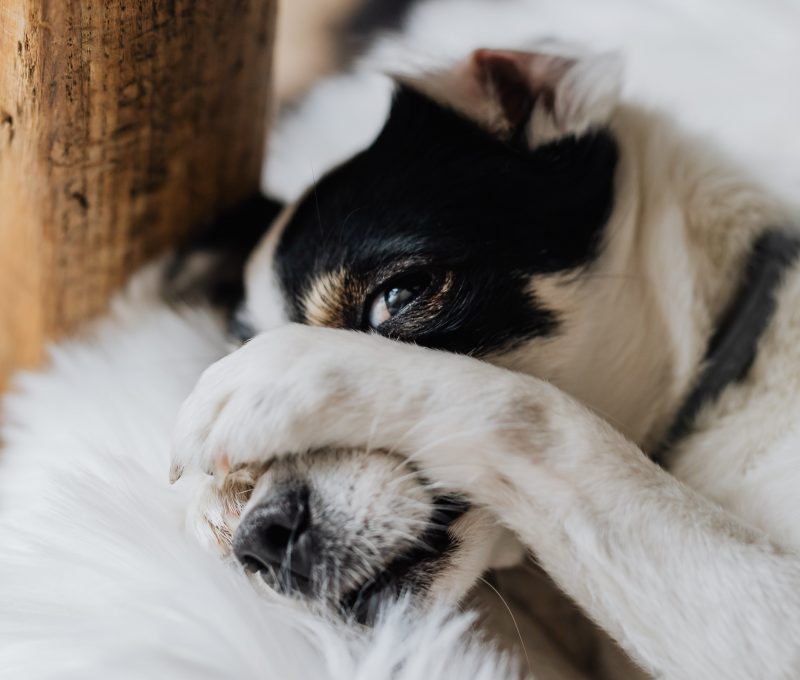How to Fix a Barking Dog – Tuffies Waterproof Dog Beds
A barking dog can become infuriating at home, in the car, or on walks. Most of us have tried sternly telling them no multiple times, only for them to briefly pause and then carry on regardless. Here’s how to fix it with positive reinforcement.
There are many different kinds of barks so you’ll need to start by identifying when and why they bark. I’ll address the two most common types which are barking at visitors to your home and barking at other dogs on walks. They both usually (but not necessarily) come from the same root causes – anxiousness and/or excitability. Barking can appear unchangeable especially with older dogs but it is fixable at any age with a good understanding of the cause, followed by consistency in training.

Shushing French Bulldog Puppy
How to Identify Anxious Barking
This sort of barking will usually occur when another person or dog enters an area that your dog considers their space. It may also happen if your dog is protective of you. ‘Their space’ will usually be the entire home but might just be a room or section that they spend a lot of time in. An anxious dog will usually appear aggressive and menacing rather than submissive because that’s their best defence mechanism, but they can also appear excited. It’s very easy to interpret this aggressive-looking bark as unnecessary anger and resort to disciplining them but this will usually make the problem worse. It’s also very dangerous; even the friendliest dogs will bite when backed into a corner during fight or flight mode. You can identify this type of bark by the body language of the dog, they’ll look triggered and frantic and in bad cases will have their hackles raised and be showing their teeth.
The root of the problem is that they feel threatened, so rather than trying to correct the bark you need to address the worry. Keep reminding yourself that although you can see clearly that the postie is no threat at all, he is, in the eyes of your dog, Satan himself.

Defensive German Shepherd
How to Fix Barking at the Door
The aim is to ease that anxiety by starting small and slowly exposing them, with treats, to the so-called ‘threat’, assuring them along the way that there’s nothing to be worried about. Get a friend to knock on your door and reward before the bark with a high value treat. If the treat doesn’t get your dog’s attention then regress to something easier like treating them when someone walks past your home or a car drives past. You could even use your phone to record the sound of someone knocking on your door and randomly play it around your dog, sharply following it with a treat and praise. Remember when the postie normally comes and be ready with a treat to dispense before any barking occurs. You want your dog to associate visitors with a positive reward which will replace the anticipatory anxiety that leads to barking. Usually, this training takes a while and involves a ‘2 steps forwards, 1 step back’ approach so don’t lose heart. You could even leave treats near your driveway entrance with a note for visitors to take one and give it to your dog if they don’t hear any barks.

Dog Guarding Doorway
Barking at Other Dogs on Walks
The first change you need to make is your body language. A reactive dog can sense when you tense up in anticipation of the encounter, so try and exhibit relaxed body language and a calm tone of voice. Hold the leash tight if necessary but don’t be the first to initiate it. Another good trick is to play barking videos on YouTube and accompany it with rewards or borrow blankets from other dog owners and use the smell of them to create that link between other dogs and positive reinforcement. If you have a puppy, giving them plenty of time around other (non-aggressive) dogs is important to socialise them. If they only ever get the chance to interact with other dogs whilst on their walk then you can’t really blame them for becoming obsessed.
Try and spot potential triggers before your dog does. Stop a good distance away and reward with treats when they notice the threat and then again when they choose to look at you, even if it’s only for a second. Even if it takes them 20 minutes to stop barking and look at you, reward with a treat instantly. In very bad cases it might be easier to control these occasions by asking a friend to take their dog out and position them as far away as you need them to practice. When your dog can successfully turn their attention to you, reward and make it harder by moving closer for the next attempt. It’s also a good idea to randomize how close you are to the dog a little bit as inching closer every time can cause a build-up of the anticipation. You still want to make it gradually harder but keeping them guessing makes it easier to keep their attention. If you can’t get their attention, try a higher value treat like chicken or cheese or use a toy and try and engage with them more by asking for simple tricks like sit or down. You may also find it useful to schedule their meals for after walks so they have an appetite for the treats.

Jack Russel Keeping Shtum
To Conclude
In both cases, you want your dog to replace that negative, defensive mindset with a positive association between so-called threats and rewards, ideally before barking occurs although that may not be possible to start with. If you’re still stuck, have a browse online for dog training videos on this topic, there’s a wealth of good content out there, specifically on reactive barking. If you have a dominant or outwardly aggressive dog then consider getting a behaviourist as this is a different and more complex issue than the one described above. Good luck!
P.S…
It’s great to take your dog out and socialise them as much as possible but, particularly at this time of year, it means dirty paws are making their way into your living room. A good option is to get a luxury fleece for your waterproof dog bed or raised dog bed. It means you can just shove the cover in the washing machine, and it will come out smelling and looking great. Our waterproof dog bed has no way of storing moisture so you don’t have to worry about that long-term dog smell lingering in your home.
-
07/12/2021 13:25
Super Sniffers and Superheroes Deserve Waterproof Dog Beds
A dog’s sense of smell is incredibly accurate and their ability to communicate with humans means that in lots of areas they can outperform technology and medical experts. They can also sense when their owners are in tr.. -
06/03/2022 21:25
Cool Tricks to Teach Your Dog - Waterproof Dog Beds
Here are some pointless tricks to teach your dog in a shallow effort to impress your friends! These tricks, however useless, help create a deeper bond between you and your dog and will act as a form of mental and physica..



